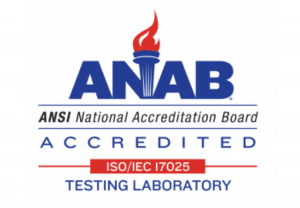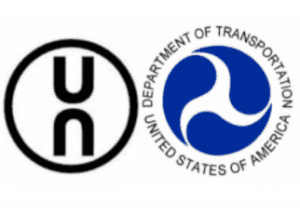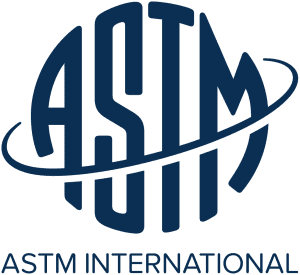Package Integrity Testing
Package Integrity Testing is crucial for evaluating the sterility and shelf life of a packaged product. Package integrity is especially critical for sterile pharmaceutical products. Establishing the correct criteria for evaluating the packaging system is a fundamental step in deciding the integrity of the packaging. Depending on the packaging system being evaluated, multiple tests may be needed to confirm the packaging system. An evaluation of the product and packaging properties will need to be conducted to appropriately decide the correct testing methods.
What is Package Integrity Testing?
Package Integrity Testing is the evaluation of packaging to meet the desired amount of protection or containment of the packaging components. The physical capability of the packaging is evaluated to measure the protection of the package’s contents. This is performed by measuring: microbiological, chemical, product, and barrier attributes. Testing for package integrity supplies assurance that a package is sealed properly, the product within is held, and foreign contaminants stay outside the packaging system. Overall, testing for package integrity will save your company thousands of dollars from potential defects or failures later. It is important to make sure your packaged product can manage the conditions it will face along the way.
How To Test for Package Integrity
Bubble Emission
To evaluate flexible packaging for gross leaks, a bubble emission test is performed. Bubble leak testing is used to evaluate flexible packaging systems including sterile barrier Tyvek(R) pouches or thermoformed trays. Bubble testing assesses the entire sterile barrier system’s ability to support a sterile barrier without being compromised by tears, holes, or improper seals. The ASTM standard used for bubble emission testing is ASTM F2096 – Standard Test Method for Detecting Gross Leaks in Packaging by Internal Pressurization (Bubble Test).
Burst Test
Package Burst Testing is a destructive test that is used to evaluate nonporous packaging made from films, foils, or laminates. These packages can be either flexible or trayed. This type of testing can be a valuable resource for finding weak points in the packaging system itself and defining the smallest amount of pressure that would cause the packaging system to burst. The ASTM standard used for bursting testing is ASTM F2095 – Standard Test Methods for Pressure Decay Leak Test for Flexible Packages With and Without Restraining Plates.
Dye Penetration
Dye Penetration Package Integrity Testing is a destructive package integrity test that is applied to a transparent material that has been sealed to a porous material. A dye solution is injected into the package along the longest edge of the inner seal. Once the dye has been injected, a visual inspection is performed looking for channels of dye dispersed across the package’s heat seals. Potential defects within the seal of a sterile barrier system can then be visually assessed using this type of testing. There are three different dye penetration methodologies with Method A being the preferred testing methodology.
Method A – Injection: The dye solution is injected into the package along the longest seal edge and the seal is inspected for channeling or leaks.
Method B – Edge Dip: The edge of the package is physically dipped into the dye solution and then observed for any wicking upward for any channels.
Method C – Eye Dropper: After separating the two materials, an eye dropper is used to place a bead of dye solution along the outside edge of the package seal to detect a channel in the seal.
The ASTM standard used for dye penetration testing is ASTM F1929 – Standard Test Method for Detecting Seal Leaks in Porous Medical Packaging by Dye Penetration.
Why Purple Diamond for Package Integrity Testing?
Package Integrity Testing is completed on site at Purple Diamond and can be tailored to your specific testing needs. By testing for your packaged product’s specific needs, we can simulate the conditions that your packaged goods will be exposed to during the product’s lifecycle. Purple Diamond can evaluate packaged products as a single unit or as part of a full pallet load, offering Materials Testing in conjunction with Package Integrity Testing to decide how exactly a product will run within its protective barrier.
Our engineers collaborate with you throughout the entire testing process to address any concerns, consult alongside you to offer recommendations, and ultimately help you create the best packaging for your product. Purple Diamond is committed to delivering high-quality results as we develop a comprehensive solution to your specific package integrity testing needs.
At Purple Diamond, we offer a free consultation or a guided tour of our facilities. Consultations can be done over the phone or on zoom, so choose what suits you best. To get in touch, go to our Contact Us page and fill out the form or book an appointment using the calendar below. Our goal is to assist you in any way possible, so please don’t hesitate to contact us. Thank you so much for reading down this far and thank you for considering Purple Diamond as your dedicated testing, engineering, and design facility for all of your packaging needs.
Related Testing Standards
- ASTM D642
- ASTM D685
- ASTM D880
- ASTM D951
- ASTM D999
- ASTM D3078
- ASTM D3103
- ASTM D3285
- ASTM D4169
- ASTM D4332
- ASTM D4728
- ASTM D5265
- ASTM D5276
- ASTM D5277
- ASTM D5487
- ASTM D6055
- ASTM D6179
- ASTM D6344
- ASTM D6653
- ASTM D7386
- ASTM F88
- ASTM F1140
- ASTM F1886
- ASTM F1929
- ASTM F1980
- ASTM F2096
- ASTM F2250
- ASTM F3039
- ASTM D1596
Contact Us
Accreditations
Affiliations
At Purple Diamond, we offer a free consultation and a guided tour of our facilities. If you’re nearby, feel free to drop by. Consultations can be done over the phone or on zoom, so choose what suits you best. To get in touch, go to our Contact Us page and fill out the form or book an appointment using the calendar below. Our goal is to assist you in any way possible, so please don’t hesitate to contact us. Our website contact form is located at www.purple-diamond.com/contact-us, but we promise to get back to you soon, no matter which method of communication you choose.
package integrity testing, package testing, integrity testing, package integrity, package integrity analysis, package integrity inspection, package integrity evaluation, package integrity assessment, package integrity verification, package integrity measurement, package integrity standards, package leak testing, package burst testing, package seal integrity testing, package seal strength testing, package drop testing, package compression testing, package vibration testing, package temperature testing, package humidity testing, package altitude testing, package transportation testing







